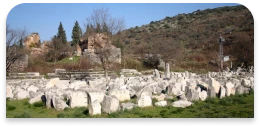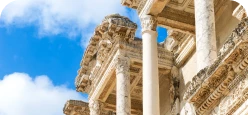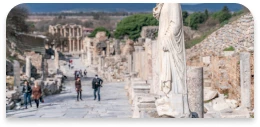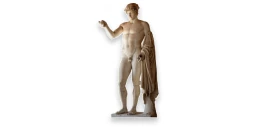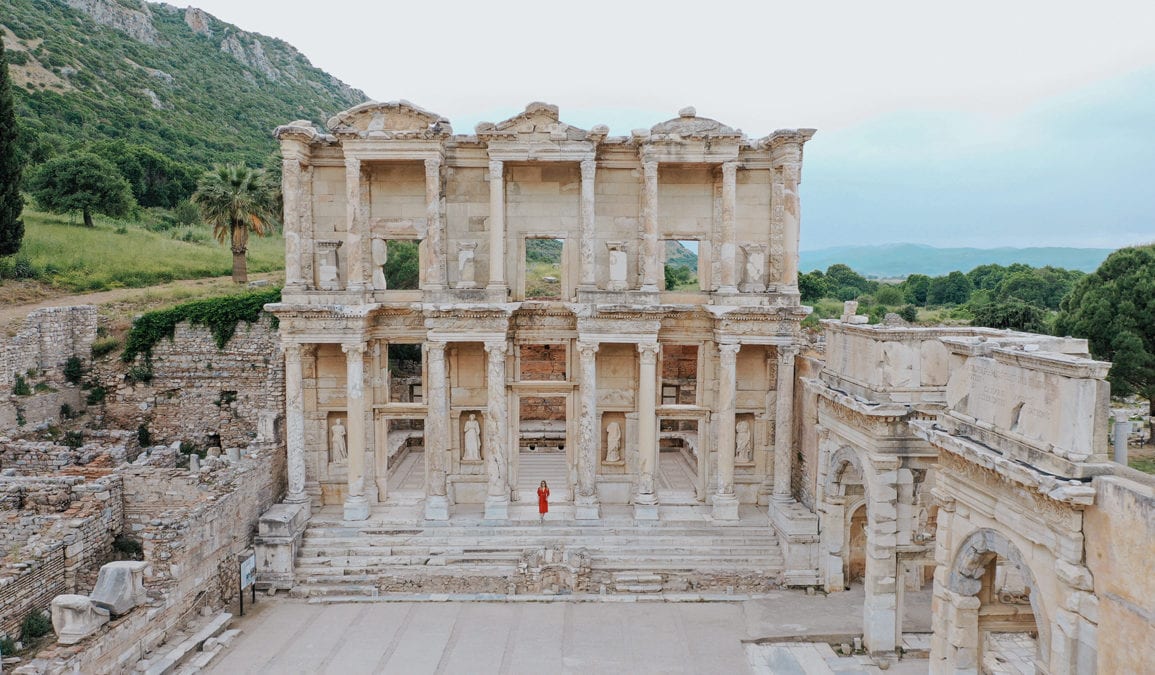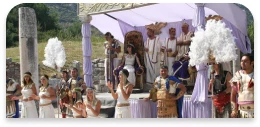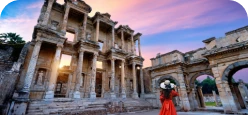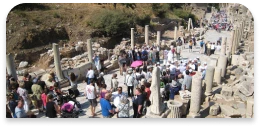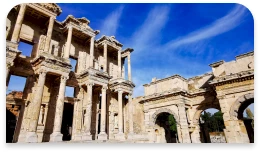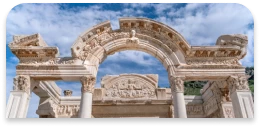Mosaic Art in Ephesus
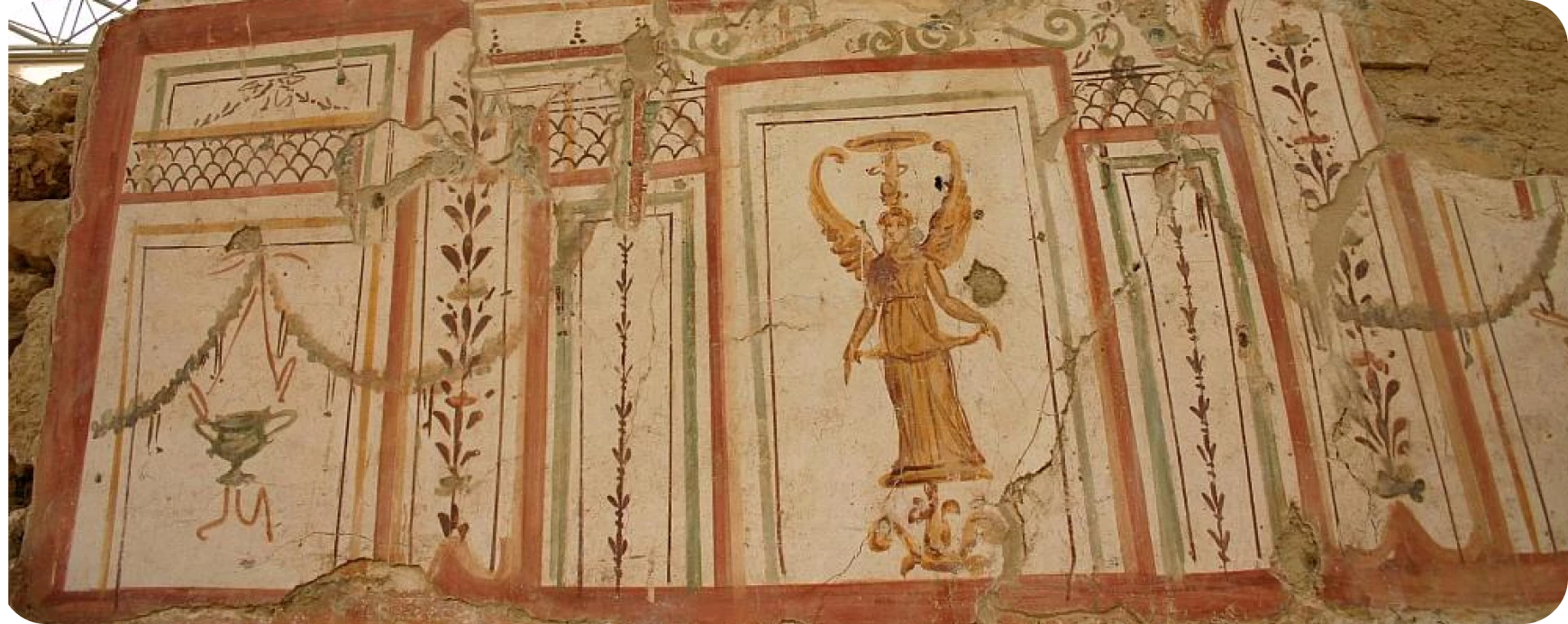
Dated back to Ancient Greek and Roman period, mosaic is among the oldest, most durable and eye catching way of expression of art. Overspread from Rome to Mediterranean and North Africa, mosaic, then, reached to Europe. With the end of the Roman Empire, the mosaic art developed in Iran and Byzantine. The mosaic works of the Byzantine period had the reflections of the antique world which continued and developed until the Renaissance. After Renaissance, mosaic lost its importance and paintings were much favored. The art has come up together with the modern art in the 20th century.
The mosaics in Ephesus reveal the Roman Period’s art which may be defined as the refined style of the antique art and Hellenistic art, the combination of different characters, the unity of mythology and aesthetics. As the eastern capital state of Rome, the rich Ephesus, of course, had the unique works of mosaic art. The influence of the states over Roman art was clearly visible. Especially, the deep-rooted history and culture of the Anatolia under the control of Rome added new taste to Roman art. The temples, roads and houses were ornamented with marvelous mosaics. Although, the mosaics are widely black and white and geometrical, the colorful settings with mythological references inside geometrical borders are also found as the typical Roman style. The life of the heroes and governors, mythological stories, wars and hunting are successfully described in mosaics while the changes in colours flow so naturally. The perfect usage of the shades enriches the deepness of the setting. The terrace houses of Ephesus are the very stunning ones, revealing the importance of mosaics in Ephesians’ way of living.
Private Ephesus Tour
%100 satisfaction guarantee


